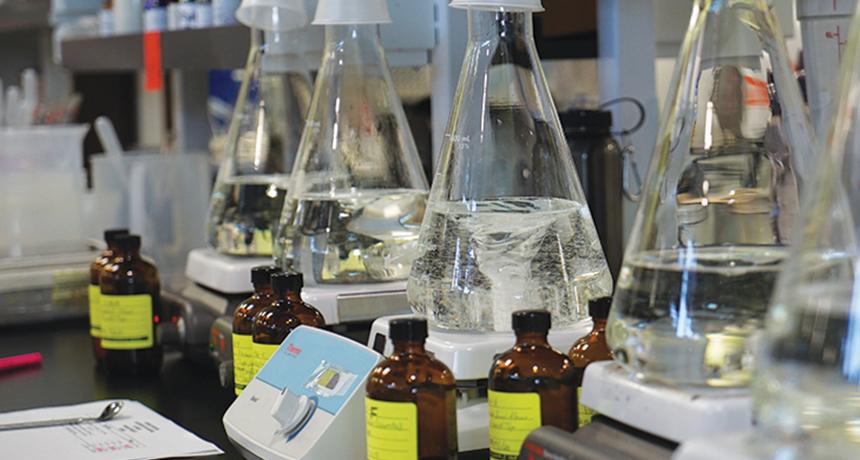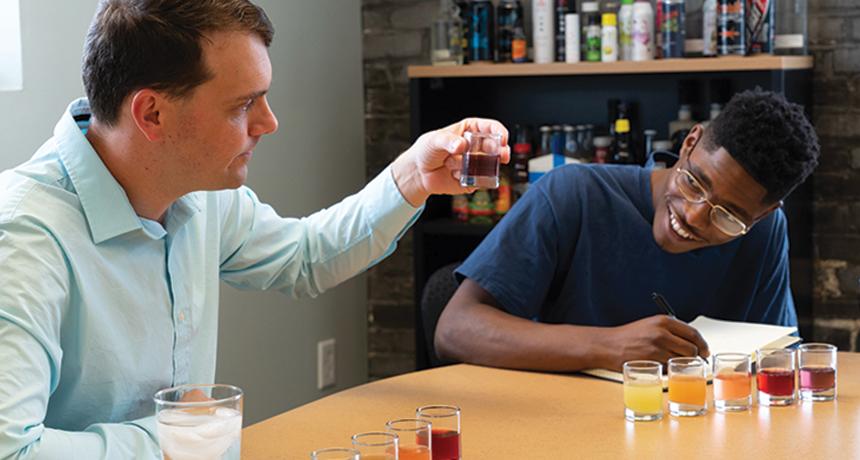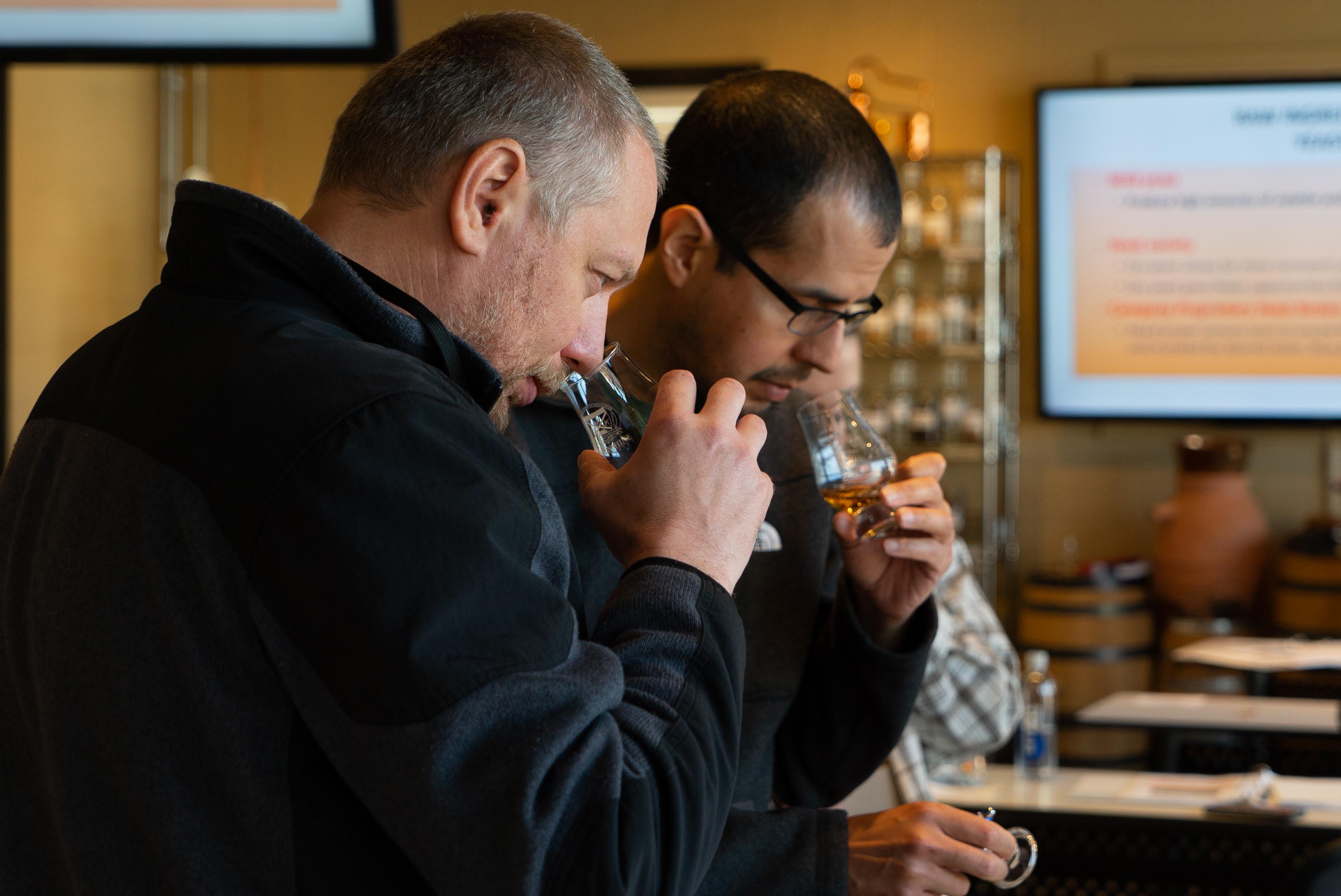
The Art of Non-Alcoholic Spirits
blog
For decades, spirits and cocktails have fostered a culture of craft, connection, and celebration. But over time, cocktail culture has evolved far beyond the buzz!

Even in the midst of a global pandemic, Ready-to-Drink (RTD) cocktails continue to dominate the beverage space. Though already on the upwards trend pre-COVID, the RTD cocktail category experienced an unprecedented boost just as the US was beginning to feel the effects of the virus.
Thanks to factors like the rise of at-home cocktail culture, convenience, pandemic-fueled concerns for health and safety, and the improved quality and variety of RTDs, consumers are increasingly reaching for RTD cocktails over traditional beer, wine, and spirits.
Because the majority of RTD cocktail sales has historically come from off-premise, the category has not suffered in the same way that many spirits brands dependent on on-premise sales have. So even as bars, tasting rooms, and restaurants begin to re-bound from several months of closures, RTD cocktails have continued to lead growth across all spirits categories, with Nielsen reporting a 91.8% increase from May 31 to June 27.
It's obvious that RTD cocktails are here to stay- but it doesn't have to mean bad news for craft. This fast-growing trend represents an opportunity with implications for craft distillers and spirits brands seeking ways to expand their product lines and diversify their portfolios. If you've ever thought about launching your own RTD cocktail line, now might be the time to do it- but before you get started, consider these three tips.
Before you do anything, you'll need to iron out your concept in relation to its market position.
RTDs tend to fall into one of two categories: a "healthier" drink (read lower calorie, lower ABV) or a higher proof cocktail meant to replicate the bar experience. Regardless of how you choose to position your product, this vision will ultimately inform different aspects of your development.

Take sweeteners, for example: if you didn't already know, alcohol has calories- 7 per gram, to be precise. This might not matter to you if you're planning to re-create your favorite cocktail, but it might if your goal is to appeal to the "better-for-you" beverage crowd.
You could avoid sweeteners completely and make a simple hard seltzer with added flavoring, but if you are looking to create a specific profile for a cocktail, then you'll probably need some kind of sweetening agent- more than likely, one that will add calories.
Moral of the story? The best way to avoid mistakes, save time, and set yourself up for success is to clarify your concept first, then flesh out the technical aspects of that vision with your development team.
What's the best part of an RTD cocktail? Some might say convenience, others would argue that it's all about the alcohol.
At least where the latter is concerned, you've got options. In RTD cocktails, there are 4 different alcohol bases to choose from, each of which have their own flavor, color, ABV, cost, and caloric implications.

Sugar brew has become increasingly popular as a low ABV base in recent years. Sometimes called "sugar beer," this type of alcohol base is made by fermenting sugars from cane, beet, or corn.
From a development perspective, sugar brew is an attractive option for its neutral flavor and colorlessness. Because it's naturally gluten free, it can also be a great fit for RTD products positioned as healthier alternatives to beer and other alcohol offers; but if you're trying to meet a calorie goal, keep in mind that you'll need to account for 1g of sugar and 2g of carbs per 12 fl oz, in addition to the calories in the alcohol itself.
Malt base is made from fermented, partially germinated grains. Malt bases can come in the form of a "Neutral Malt Base" (NMB) or give a more beer-like profile to an RTD beverage — that could be a benefit for attracting and converting beer drinkers, if that happens to be part of your marketing plan.
Like sugar brews, the remaining sugars and carbs in the base will contribute calories on top of those provided by the alcohol. This will be a trade-off you'll need to consider if calorie-count is important to your product.
Wine bases offer another option, though a more expensive one where taxes are concerned when compared to a sugar brew or malt. Standard wines are made from fermented fruits, like grapes.
Depending on the wine used, the flavor and color of your finished product can be affected. If you're planning to market your product to established wine drinkers, then a specific wine style might work well for your base. Of course, you can always opt for an "Other Than Standard" (OTS) wine, which is a neutral base used often in the development of RTD products.
You're definitely familiar with this one: a spirit base is produced by distilling any variety of sugars, grains, fruits, or botanicals. If you're interested in making a premium or higher ABV product, or in replicating the bar experience, then a spirit base may be an attractive option for you.
Tequila, gin, rum, and bases will all have more flavor and/or color implications than a vodka or Grain Neutral Spirit (GNS). Whatever spirit base you choose will also still be more expensive than the sugar brew, malt base, and wine base options.
When considering the implications of each base, don't forget that taxes and regulations may vary at both the federal, state, and local levels and across alcohol types — that still affect your Cost of Goods Sold (COGS)!
Alcohol type is important, but there's already a lot of RTDs out there — so how do you plan on making your product stand out? Well, flavor is a great place to start.
While classic cocktail re-creations and flavors like mango, black cherry, lime, lemon, and grapefruit have become go-tos for many, brands are increasingly looking for ways to move beyond these staples and separate themselves from the competition. Whether you're interested in creating the next hard seltzer or something similar to what you'd order at a bar, there's still ways to do it differently.
Here's a few trends to think about while you wait for inspiration to strike:
Even as consumers continue to seek out new, sophisticated flavor combinations to dazzle their taste buds, they seem to enjoy being grounded by flavors they recognize.
One route could be offering up a fresh take on something familiar. Instead of a classic lemon-flavored hard seltzer, for example, maybe use botanical alternatives such as bergamot or citron. Although these flavors have similar profiles to the standard lemon flavor, they can seem more premium and exotic to consumers.
The same goes for replicating the bar experience: don't just re-create the same traditional cocktail recipe, give it a fresh take. Don't be afraid to innovate!

Sticking with our lemon theme, instead of making a hard lemonade, maybe add a hint of lavender or hibiscus for an elevated and flavorful twist. Pairings that strike this comfortable balance allow consumers to approach new flavors with an appropriate frame of reference while feeling like they've just indulged in a more sophisticated experience.
Our 2020 Spirits Trends lineup and post-pandemic analysis can provide some additional insights to guide you as you consider which flavors are right for your next line of RTD cocktails.
Of course, finding the right partner to develop your RTD cocktail will be a huge advantage for guiding your decision-making in each of these areas, as well as preventing mistakes early in the process.
After all, if you're going to make an RTD, make sure it's done right the first time! To learn more about what it takes to launch an RTD cocktail, visit flavorman.com.
Interested in learning more about the distilling process and the spirits industry? Check out Moonshine University's 2020 courses to learn from the best in the business.

blog
For decades, spirits and cocktails have fostered a culture of craft, connection, and celebration. But over time, cocktail culture has evolved far beyond the buzz!

blog
Those that are familiar with the process of crafting distilled spirits may also be familiar with the 10 common congeners that are created during fermentation, and honed during the distillation run. Each congener has its own distinct personality, rendering unique tastes and aromas to the finished spirit.

blog
So, you want to start distilling with freshly milled grain. Maybe you're tired of paying top dollar for the pre-milled stuff from the malt distributor, and you're ready to invest in the quality, efficiency, and bulk pricing that comes with milling your own whole grain. But where do you start?